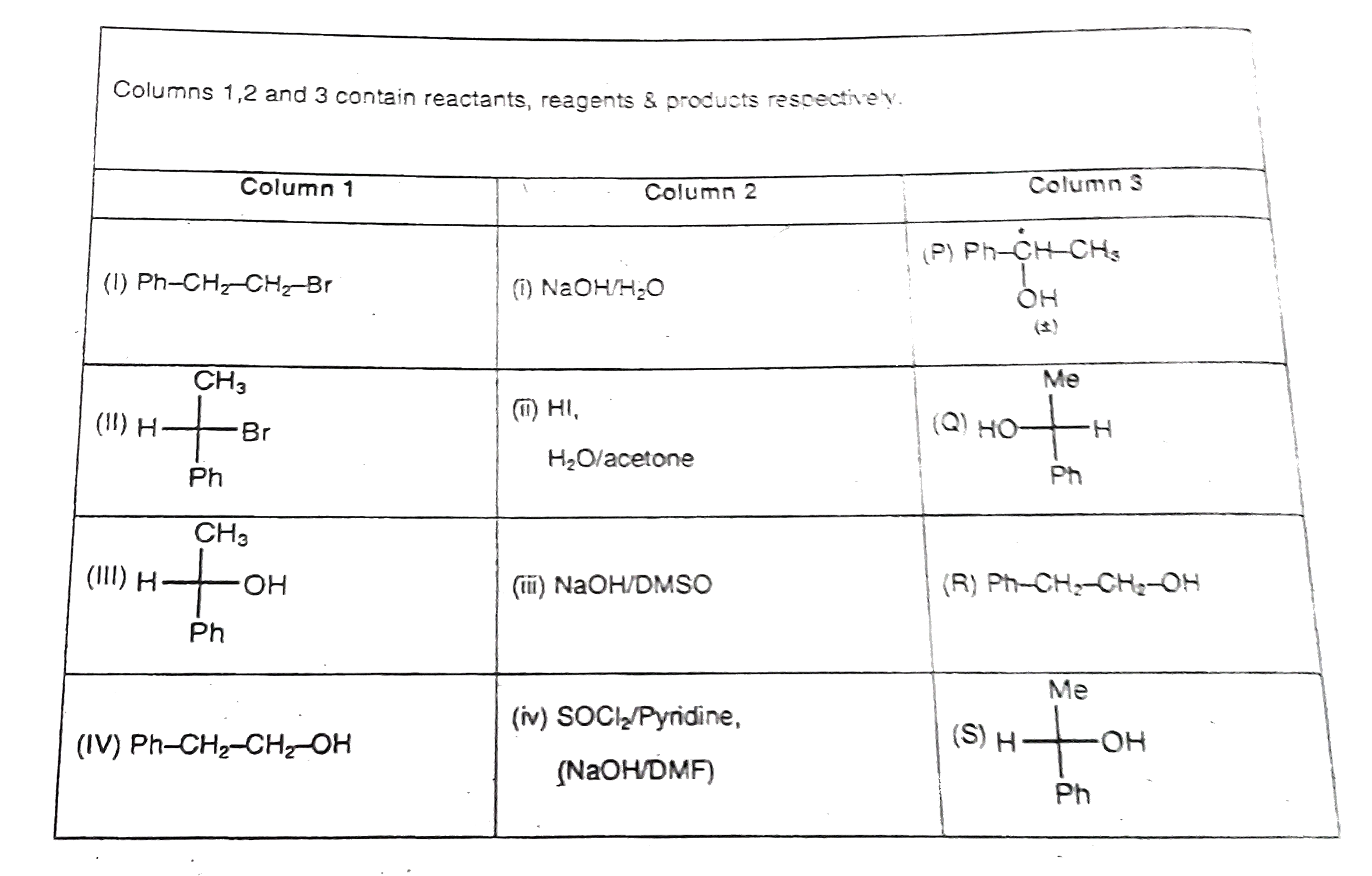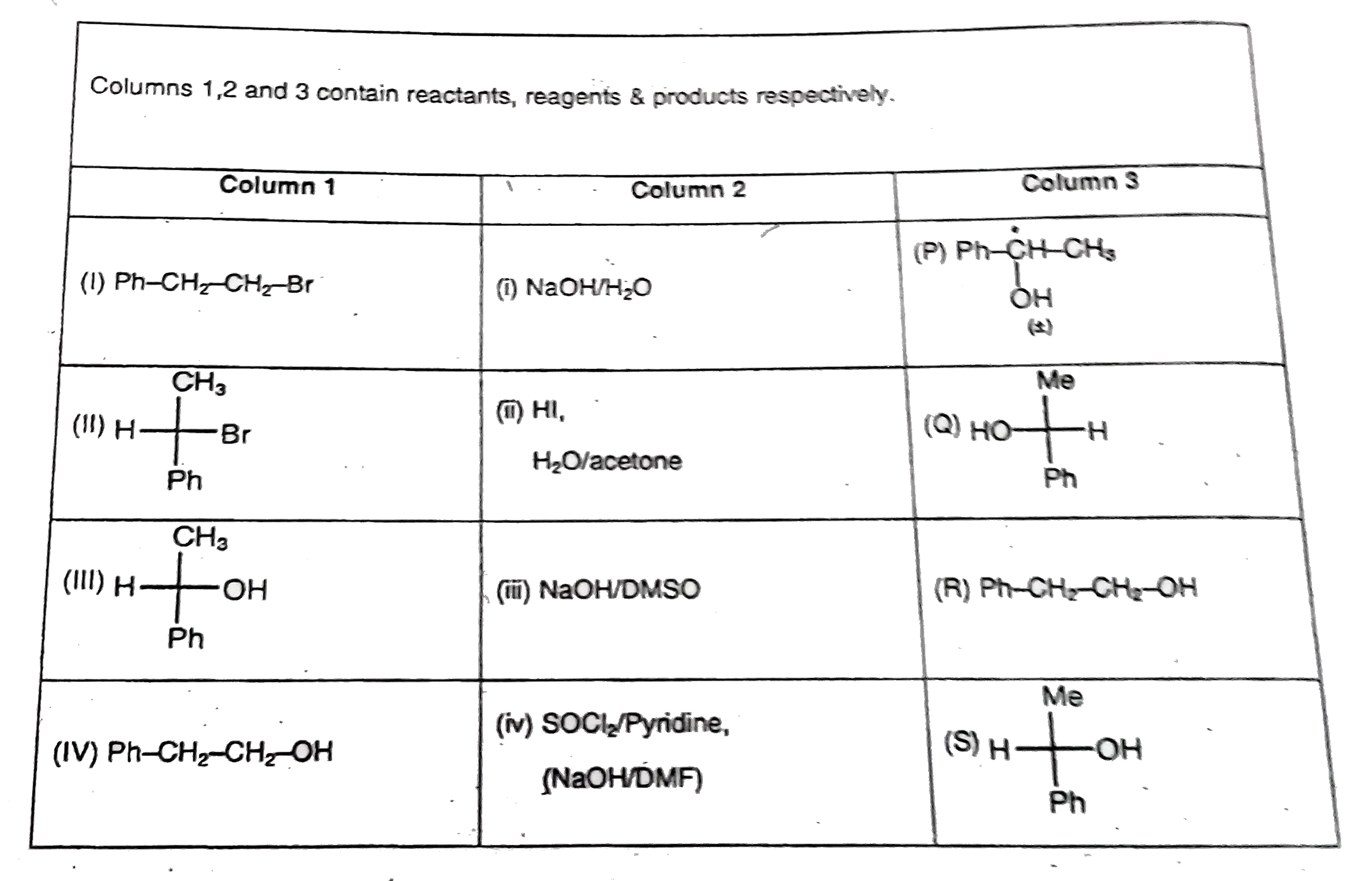tert-Butylbromide reacts with aq. NaOH by SN1 mechanism while n-butylbromide reacts by SN1 mechanism. Why?
Tert. butyl bromide reacts with aq. NaOH as follows
H3C−CH3∣C∣CH3−Brtert Butylbromide(3∘ alkyl halide)SN1−−→H3C−CH3∣C+∣CH3+Br−3∘carbocation(more stable)
H3C−CH3∣C+∣CH3+OH−→H3C−CH3∣C∣CH3−OH
tert. butyl bromide when treated with aq. NaOH, it forms tert. corbocation which is more
stable intermediate. This intermediate is further attacked by −OH ion.
As tert. carbocation is highly stable so tert butylbromide follow SN1 mechanism.
In case of n-nutylbromide,primary carbocation is formed which is least stable so, it does not follow SN1 mechanism. Here, stearic hindrance is very less so, it follow SN2 mechanism. In SN2 mechanism, −OH will attack from backside and a transition state is formed.
The leaving group is then pushed off the eopposite side and the product is formed,

Topper's Solved these Questions
- BOOK - NCERT EXEMPLARCHAPTER - GENERAL PRINCIPLE AND PROCESSES OF ISOLATION OF ELEMENTS EXERCISE - General Principle And Processes Of Isolation Of Elements55videos
GENERAL PRINCIPLE AND PROCESSES OF ISOLATION OF ELEMENTS
- BOOK - NCERT EXEMPLARCHAPTER - P-BLOCK ELEMENTSEXERCISE - P-Block Elements72videos
P-BLOCK ELEMENTS
Similar Questions
Knowledge Check
- Question 1 - Select One

Only SN1 mechanism is observed in :A(I)(i)(R)B(II)(iii)(P)C(IV)(ii)(S)D(III)(ii)(P) - Question 2 - Select One

SN2 mechanism is observed in :A(I)(iii)(R)B(IV)(iv)(R)C(II)(iii)(Q)Dall - Question 3 - Select One
For SN1 mechanism which of the following is correct ?
AInversion (100 %)BFormation of carbocationCNon-polar solventDElimination
Explain why
(a) the dipole moment of chlorobenzene is lower than that of cyclohexyl chloride ?
(b) alkyl halides, though polar, are immiscible with water ?
(c) vinyl chloride is unreactive in nucleophilic substitution reactions ?
(d) neopentyl bromide undergoes nucleophilic substitution reactions very slowly ?
(e) 3-bromocyclohexane is more reactive than 4- bromocyclohexane in hydrolysis with aqueous NaOH ? (f) tert butyl chloride reacts with aqueous sodium hydroxide by SN1 mechanism while n-butyl chloride reacts by SN2 mechanism.
(g) Grignard reagents should be prepared under anhydrous conditions ?View SolutionThe following will react faster by SN1 mechanism
View SolutionWhich of the following reaction follows SN1 mechanism ?
View SolutionWhich of the following reaction follows SN1 mechanism ?
View SolutionThe order of reactivity of halides towards SN 1 mechanism is
View Solution
